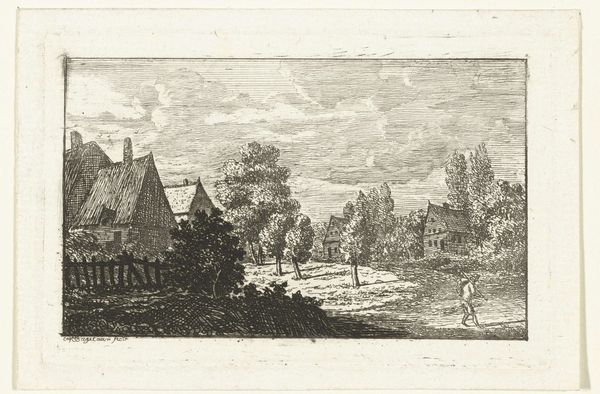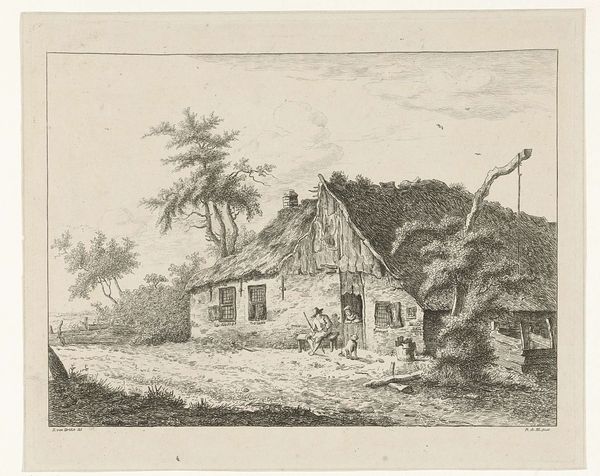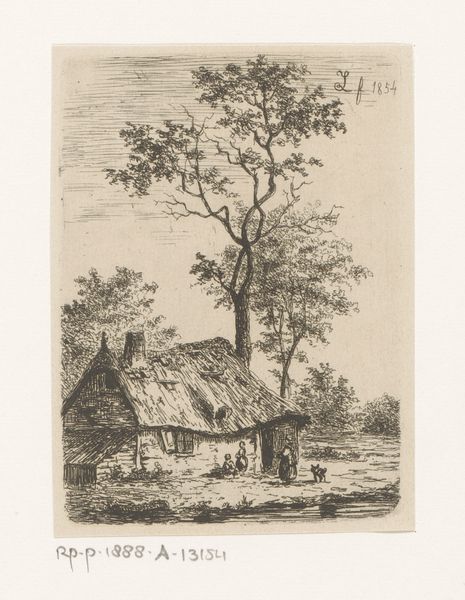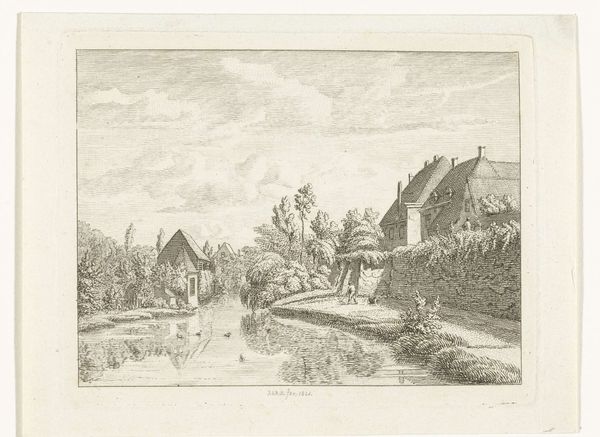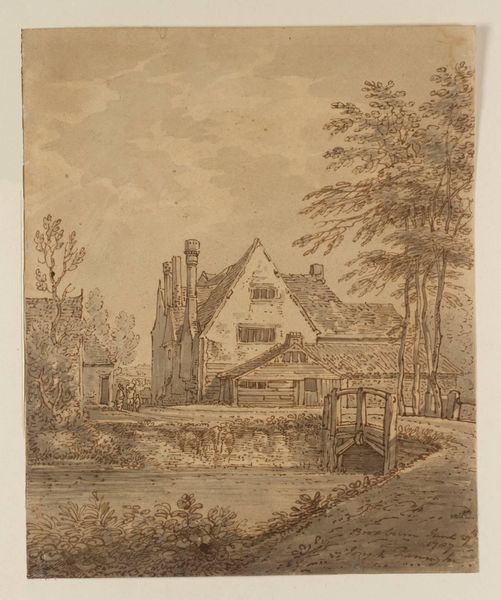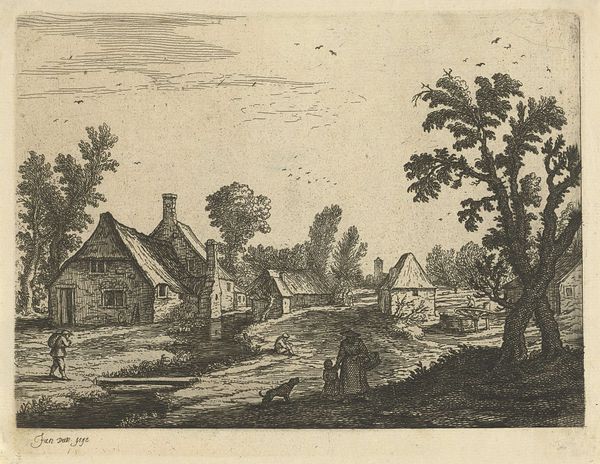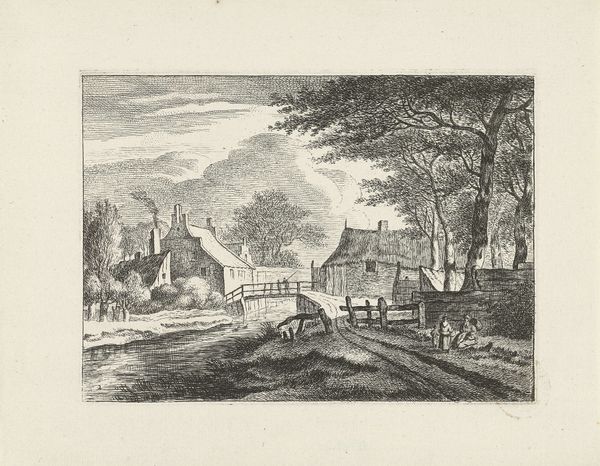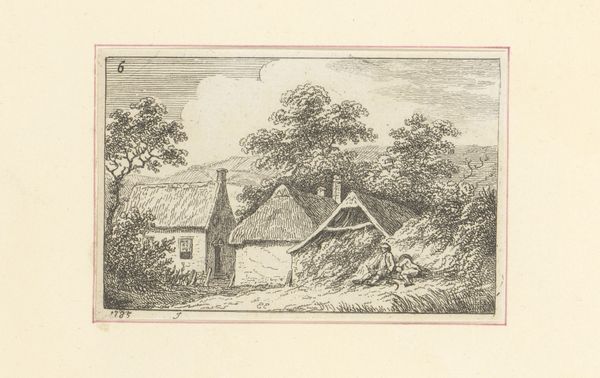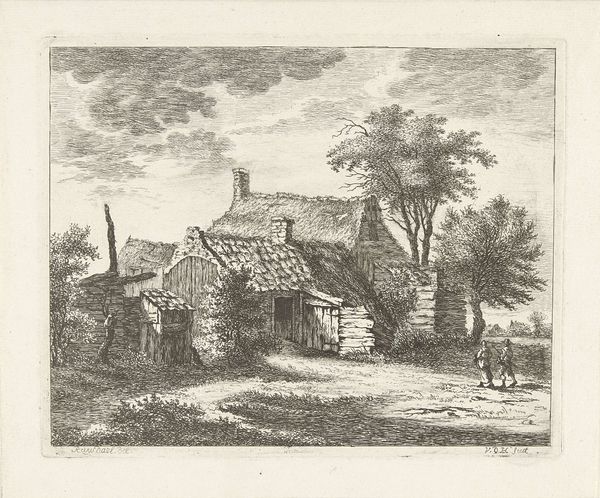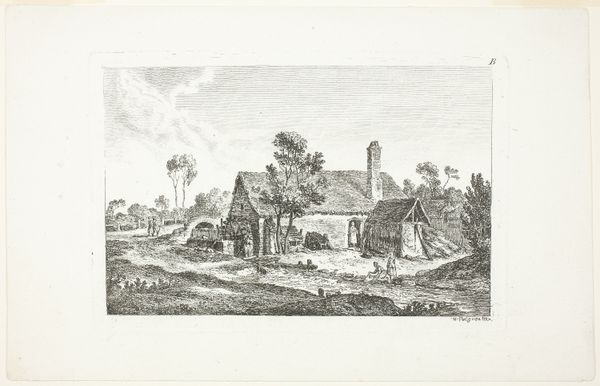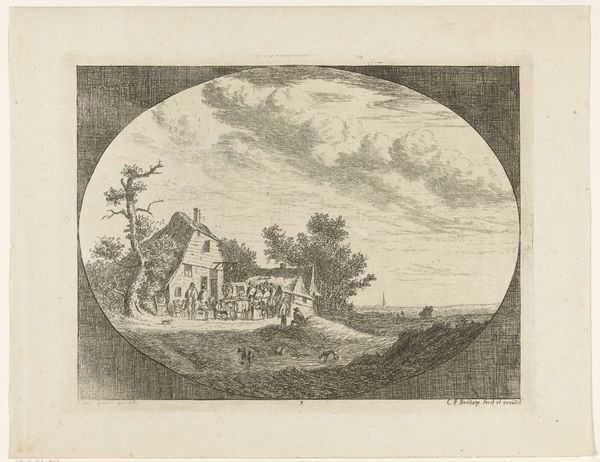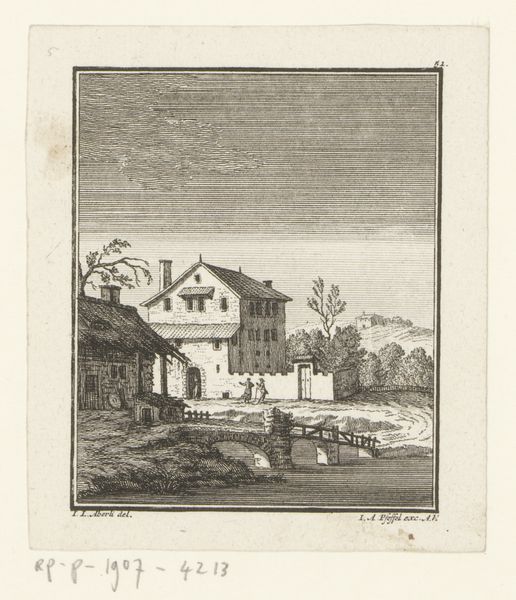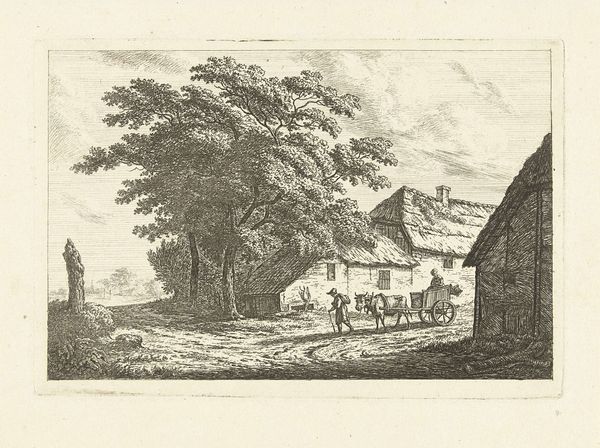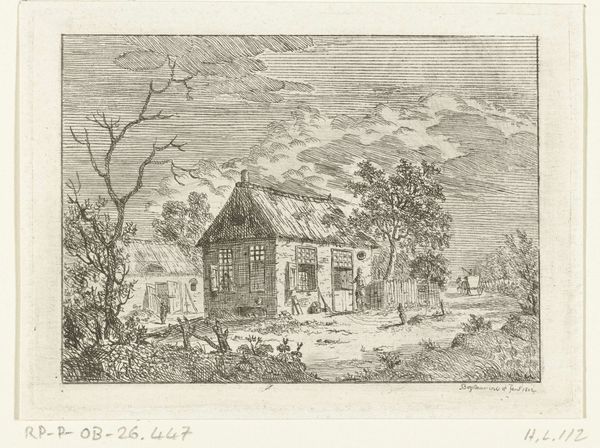
print, etching
# print
#
etching
#
landscape
#
romanticism
#
genre-painting
Dimensions: height 216 mm, width 161 mm
Copyright: Rijks Museum: Open Domain
Curator: Let’s turn our attention to "Landschap met kerk en watermolen" or "Landscape with Church and Watermill", an etching made sometime between 1803 and 1841 by Johannes van Cuylenburgh. What's your first take on this piece? Editor: Well, there is an undeniable pastoral stillness here. The landscape has a somber yet familiar allure to it—though the tones are muted, the artist still captures the simple charm of rural life. Curator: Indeed. Cuylenburgh, working during the height of Romanticism, offers us more than just a visual scene; he provides commentary on the era. Take, for instance, how the towering church—usually a symbol of centralized power and moral authority—is juxtaposed against a modest, even unassuming watermill. Editor: The composition of light and shadow does so much work in the etching, it really drives home how the two structures coexist, almost independently of one another, don’t you think? The stark contrast pulls me in. Curator: Absolutely. This could represent the shifting socio-political dynamics of the time, with emerging industrial innovations like watermills beginning to subtly challenge traditional authority. And it extends to the individual, too: notice the lone traveler. Editor: Ah, yes, accompanied by his loyal dog, staff in hand, and pack animal laden. He seems to be positioned exactly in between these establishments. What narrative do you think van Cuylenburgh suggests for the rural denizens in these kinds of liminal landscapes? Curator: Perhaps he’s making a quiet comment about individual autonomy in a world on the cusp of enormous change, while gesturing to a connection of these landscapes with the romantic tradition of genre paintings, elevating them. How does that resonate with you? Editor: Very insightful! And on a purely compositional level, I am struck by the artist's careful use of vertical lines—the trees, the church spire—that really draws the eye upwards and emphasizes the height of the landscape. It is masterful. Curator: Yes, all elements contribute to a powerful, even subversive, message of transition and subtle commentary on humanity's place amidst societal shifts. Editor: Precisely, and with this meticulous application of etching to the medium, van Cuylenburgh compels us to examine these societal fragments. Thank you, that was a stimulating conversation. Curator: Thank you, indeed!
Comments
No comments
Be the first to comment and join the conversation on the ultimate creative platform.
